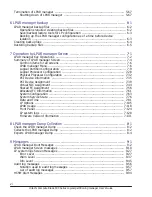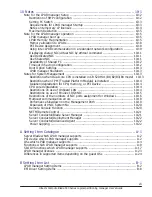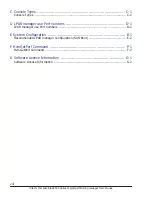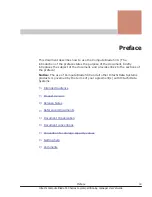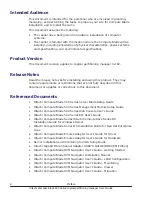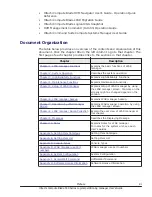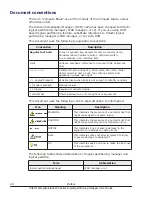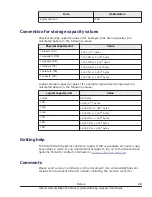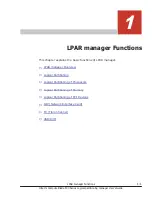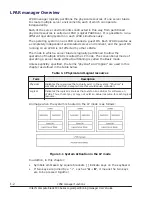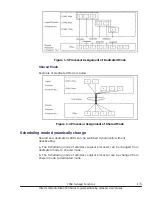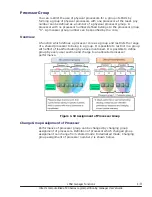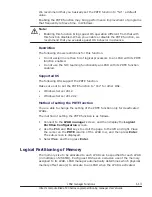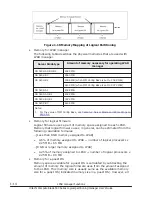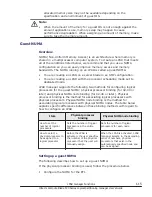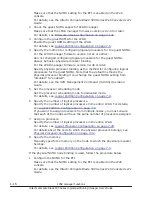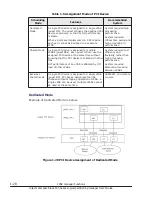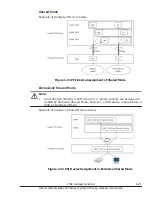
Figure 1-5 Scheduling mode dynamically change
Service Ratio
To the LPARs in the Shared Processor Mode, you can set the relative
processor resource allocation rate (called 'Service Ratio'), which represents
the ratio of the time period in which the LPAR actually run on the physical
processors (called 'Service Time'). The Service Ratio can be specified from 1
to 999.
LPAR manager partitions the performance of the physical processor used in
shared mode in 1 percent unit. LPAR manager calculates the relative
allocation rate of the service time with 10-millisecond time-slice accuracy,
which equals 1% of a unit processor time (1 second).
Service ratio has a meaning only to LPAR of shared mode. Service ratio does
not have any meaning to LPAR of shared mode, and cannot be assigned.
The examples of the relations between Service Ratio and allocation rate are
as follows.
(Example 1)
This example shows the allocation rates of LPAR1 (Service Ratio=100, the
number of the logical processors=2) and LPAR2 (Service Ratio=100, the
number of the logical processors=2) when the number of the physical
processor can be used by the shared mode LPARs is 3.
Figure 1-6 Service Ratio Example 1
1-6
LPAR manager Functions
Hitachi Compute Blade 500 Series Logical partitioning manager User's Guide
Содержание CB 520A A1
Страница 238: ...6 6 LPAR manager backup Hitachi Compute Blade 500 Series Logical partitioning manager User s Guide ...
Страница 376: ...8 6 LPAR manager Dump Collection Hitachi Compute Blade 500 Series Logical partitioning manager User s Guide ...
Страница 530: ...C 4 Console Types Hitachi Compute Blade 500 Series Logical partitioning manager User s Guide ...
Страница 536: ...D 6 LPAR manager use Port numbers Hitachi Compute Blade 500 Series Logical partitioning manager User s Guide ...
Страница 542: ...E 6 System Configuration Hitachi Compute Blade 500 Series Logical partitioning manager User s Guide ...
Страница 557: ...Hitachi Compute Blade 500 Series Logical partitioning manager User s Guide ...

